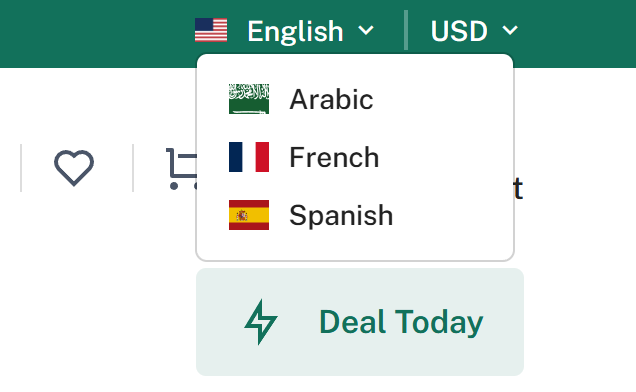
Multi-Language Support
To accommodate users from diverse regions, SaasCart includes built-in multi-language functionality, making the platform accessible worldwide. The language selection dropdown is located in the header.How Does Multi-Language Functionality Work?
SaasCart uses the following packages to implement multi-language support:accept-language, react-i18next, i18next, i18next-browser-languagedetector, and i18next-resources-to-backend.
To install these packages, run:
src/app/i18n/i18n-context.jsx
Implementing the Language Translate Feature
After installing the required packages, follow these steps to add multi-language support.1. Set Up i18n-context.jsx
2. Configure settings.js
JSON Files for Language Translations
Create a JSON file for each language with translations for words or phrases. Example JSON Files:-
English (
/en/common.json): -
Arabic (
/ar/common.json): -
Spanish (
/es/common.json): -
French (
/fr/common.json):
Using the t Function for Translations
To use a variable for translations, import useTranslation from react-i18next.
Warning: Ensure that translations are provided for each term in the JSON files to avoid missing translations.

